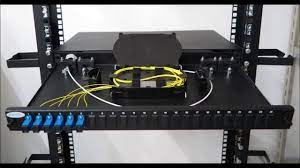The Role of Rackmount Patch Panels in Your Network Infrastructure
If you’re building a network infrastructure or upgrading your current setup, you’re likely familiar with the importance of rackmount patch panels. These critical components play a vital role in ensuring that your network operates efficiently and effectively, by providing a central hub for all of your data and connectivity needs. In this article, we’ll explore the role of rackmount patch panels in your network infrastructure, and how they can be purchased from the website rackmountsales.com.
What is a Rackmount Patch Panel?
A patch panel is a device that allows multiple network connections to be connected and managed from one central location. These panels are typically mounted in a standard 19-inch rack, hence the term “rackmount.” A patch panel is essentially a patch bay that connects the individual network ports to a larger, more complex network, such as a LAN or WAN.
Benefits of Using a Rackmount Patch Panel
One of the main benefits of using a rackmount patch panel is that it simplifies cable management. Rather than having to deal with a tangled mess of cables and wires, a patch panel allows you to neatly organize all of your connections in one place. This can make it much easier to troubleshoot any issues that arise, as well as to add or remove devices from your network as needed.
Another key advantage of rackmount patch panels is that they help to minimize signal loss and interference. When multiple devices are connected to a network, the signal can weaken as it travels from one device to another. By using a patch panel, you can help to minimize this signal loss and interference, ensuring that your network remains reliable and stable.
Factors to Consider When Choosing a Rackmount Patch Panel
When it comes to selecting a rackmount patch panel, there are a few key factors to consider. First, you’ll want to think about the number of ports you need. If you’re running a smaller network, a panel with 24 or 48 ports may be sufficient. However, if you have a larger network with more devices, you may need a panel with 96 or even 144 ports.
You’ll also want to consider the type of connectors you need. Most patch panels use either RJ45 connectors for Ethernet cables, or LC or SC connectors for fiber optic cables. Depending on your specific network requirements, you may need a panel that supports one or both of these connector types.
Another important factor to consider is the quality of the patch panel itself. A well-made panel will be built to last, with sturdy materials and high-quality connectors. Additionally, some panels may offer additional features, such as built-in cable management or labeling options, that can make it easier to maintain your network over time.
Why Choose Rackmountsales.com for Your Patch Panel Needs?
When it comes to purchasing a rackmount patch panel, you want to be sure you’re buying from a reputable source. That’s where rackmountsales.com comes in. They offer a wide range of patch panels from top brands, such as Tripp Lite and Panduit, ensuring that you’re getting a high-quality product.
Additionally, rackmountsales.com offers competitive pricing and fast shipping, making it easy to get the patch panel you need without breaking the bank. Their website is also user-friendly, with clear product descriptions and specifications to help you make an informed decision.
Conclusion
In conclusion, if you’re building or upgrading a network infrastructure, a rackmount patch panel is an essential component. It can help simplify cable management, minimize signal loss and interference, and make it easier to maintain your network over time. By choosing a high-quality patch panel from a reputable source like rackmountsales.com, you can be confident that your network will operate efficiently and effectively for years to come.







